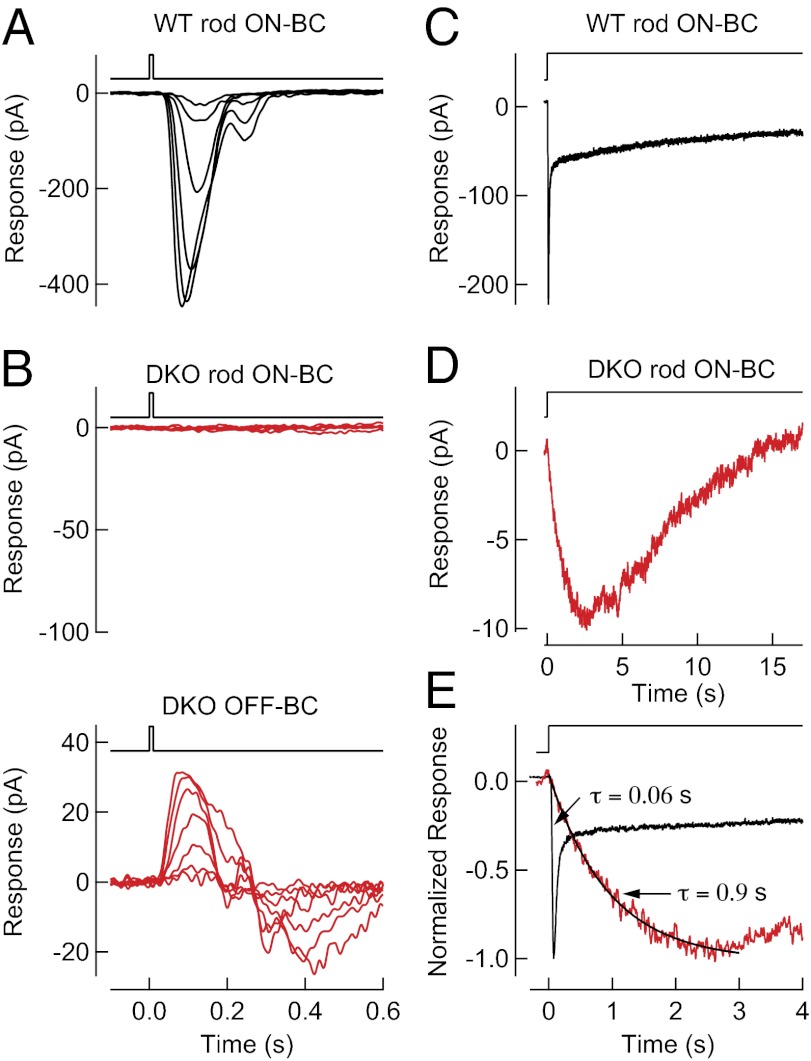Fig. 4.
Elimination of RGS7 and RGS11 slows the response of rod ON-BCs. (A) Light-evoked responses (black) to a 10-ms flash for a representative WT rod ON-BCs in voltage-clamp (Vm = −60 V). The flash monitor above the traces indicates the timing of the flash. Flash strengths were 0.4, 0.7, 1.5, 2.9, 5.9, and 11 Rh* per rod, with data collected across nine cells from two WT mice. (B, Upper) Absence of light-evoked responses (red) to 10-ms flashes for DKO rod ON-BC. (Lower) Viability of the retinal slice was confirmed by measuring light-evoked responses (red) in neighboring DKO OFF-BC. The flash monitor above the traces indicates the timing of the flash. Flash strengths were 0.4, 0.7, 1.5, 2.9, 5.9, 11, and 24 Rh* per rod. Records are representative of data collected across nine rod ON-BC and four OFF-BC cells from two DKO mice. (C and D) Light-evoked response (black) to a step of light producing 2,400 Rh* per rod per s averaged across seven voltage-clamped (Vm = −60 V) WT rod ON-BCs from one mouse (C) and averaged across seven voltage-clamped rod ON-BCs from two DKO mice (D; red). (E) Comparison of the time course of step responses in WT rod ON-BCs (black) and DKO rod ON-BCs (red). Exponential fits to rising phases revealed a time constant of ∼0.06 s in WT rod ON-BCs (not displayed) and ∼0.9 s in DKO rod ON-BCs. Membrane currents were low-pass filtered at 300 Hz and digitized at 1 kHz.

